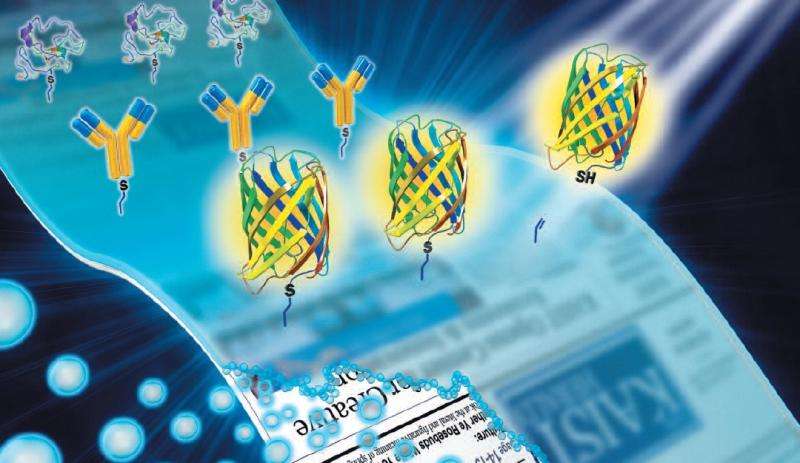Biomedical sensors for disease detection made simple

Healthcare researchers are increasingly focused on the early detection and prevention of illnesses. Early and accurate diagnosis is vital, especially for people in developing countries where infectious diseases are the leading cause of death. One way to achieve early detection is by developing simple biomedical sensors.
One challenge, however, is to ensure that biomedical sensors are environmentally stable, disposable and cost-effective. Current biosensors are made of glass or very expensive gold substrates that make it difficult to broaden their use and mobility in diagnostic and research areas.
Tackling the issue of expensive substrates, a research team at the Korea Advanced Institute of Science and Technology (KAIST) has developed a new protein detection platform that can be used with paper substrates. Not only is a paper substrate incredibly flexible and simple to handle, it is also 1,000 times less costly than the traditional glass substrate and 100 times less expensive than plastic substrates.
Unlike previous biochip sensors, which required complicated surface treatment methods to bind their target molecules, the new protein detection platform works via a simple, one-step process, which takes single molecules (monomers) and introduces them to an oxidant-coated substrate in vapour form.
Called "initiated chemical vapour deposition" (iCVD), this process can cover surfaces without damaging substrates and can successfully immobilise proteins (such as fluorescent proteins or antibody fragments) that may indicate the presence, for example, of pathogens. Unlike previous methods, the iCVD process does not require solvents and therefore is much better at binding to different surfaces without degrading them.
So far, the KAIST team has successfully used the iCVD process not only on traditional substrates like glass, but also on flexible and low-cost alternatives such as paper and polyethylene films. The researchers hope this new technology will provide a cost-efficient platform to reduce the manufacturing costs of protein biochips. Further research will continue in 2015, they say, to improve the performance and operation of the paper-based biochip.




















